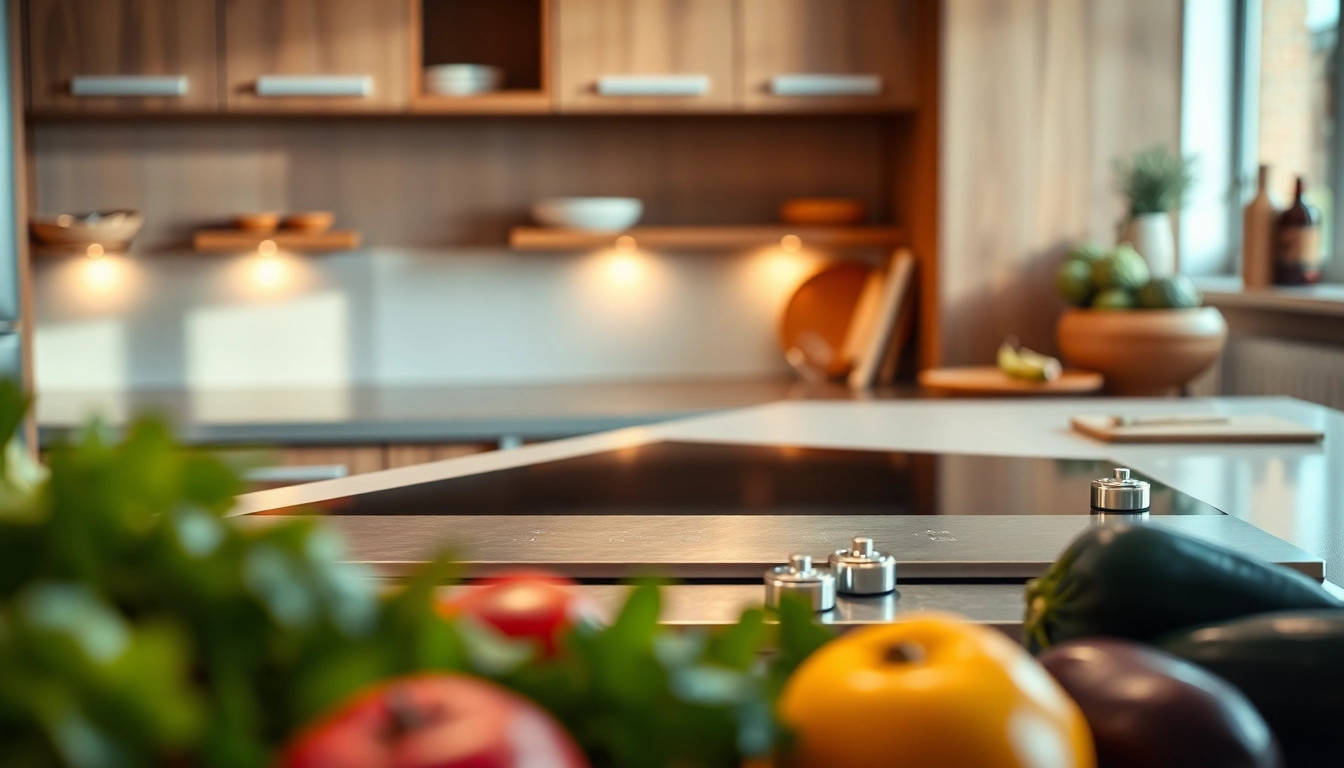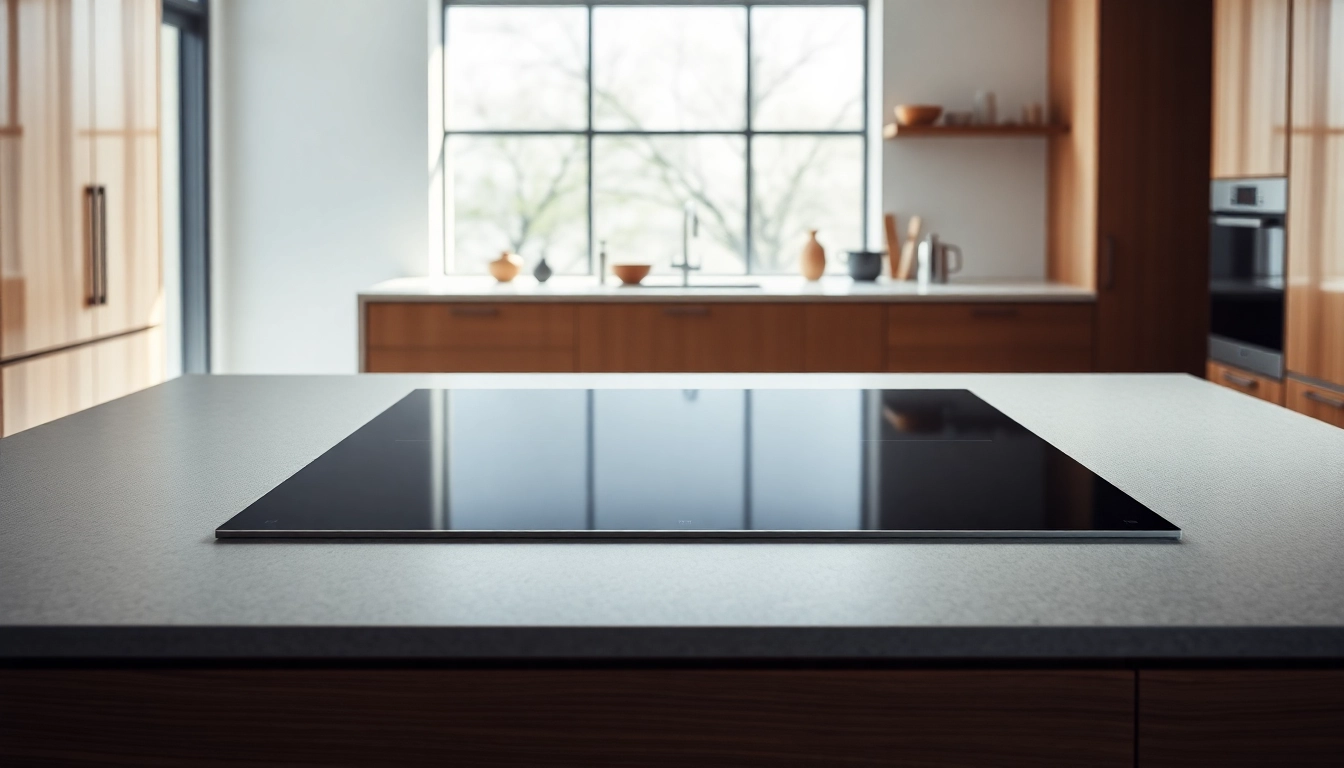Maximizing Culinary Potential with Your 36 Induction Cooktop: Features, Benefits, and Best Practices
Understanding Induction Cooking and the 36 Induction Cooktop
Induction cooking has revolutionized home cooking, offering unparalleled speed, safety, and energy efficiency. At the forefront of this culinary evolution is the 36 induction cooktop, which presents a seamless combination of modernity and functionality suitable for both expert chefs and everyday cooks. This article delves into what makes induction cooking unique, explores the key features of a 36 induction cooktop, and outlines the myriad benefits it offers over traditional cooking methods.
What Makes Induction Cooking Unique?
Induction cooking uses electromagnetic energy to directly heat pots and pans, while traditional methods rely on a flame or electric coils to transfer heat. This technology offers several unique advantages:
- Fast Heating: Induction cooktops can heat cookware in seconds, allowing for exothermic reactions that suit various cooking techniques.
- Precision Temperature Control: They provide a high degree of temperature control, meaning that meals can be prepared with greater accuracy.
- Safety: Since the cooktop itself doesn’t get hot, the risk of burns is significantly reduced; this is especially beneficial in homes with children.
- Easy to Clean: The flat surface of induction cooktops makes cleaning quick and effortless, as spills don’t bake onto the surface due to the low heat transfer.
Key Features of the 36 Induction Cooktop
The 36 induction cooktop, as a larger model, caters to more diverse cooking needs. Here are some of its key features:
- Multiple Cooking Zones: With five or more cooking zones, users can cook several dishes simultaneously, which is particularly useful during meal prep.
- Diverse Heat Settings: The cooktop typically provides various heat settings, enabling users to switch from boiling to simmering with ease.
- Bridge Functionality: Some models come with bridge elements that allow combining two cooking zones for larger cookware, enhancing versatility.
- Touch Control Panel: Most 36 induction cooktops are equipped with an intuitive touch control panel for easy operation.
- Timer Functions: Built-in timers help to keep track of cooking durations, ensuring perfect meals every time.
Benefits Over Traditional Cooktops
Switching from a traditional gas or electric stove to a 36 induction cooktop presents multiple benefits:
- Efficiency: Induction cooking is more energy-efficient, as energy is focused directly on the cookware rather than being wasted in the environment.
- Environmentally Friendly: Less energy consumption means a reduced carbon footprint, making induction cooktops an environmentally responsible choice for eco-conscious consumers.
- Consistent Temperature Control: Unlike gas stoves, where the heat can spike or dip, induction cooktops deliver consistent heat, preventing overcooking and ensuring that foods are evenly cooked.
- Modern Aesthetics: The sleek, minimalistic design of induction cooktops can elevate kitchen décor, appealing especially to fans of contemporary design.
Choosing the Right 36 Induction Cooktop for Your Kitchen
Investing in a 36 induction cooktop is a decision that impacts your kitchen and cooking experience for years. When choosing the right model, consider the following factors:
Top Brands and Models Available
Several reputable brands provide top-of-the-line 36 induction cooktops:
- Thermador: Known for high-quality appliances, their induction cooktops typically feature advanced heating technology and stylish designs.
- Miele: This brand’s cooktops often come equipped with professional-grade features, ensuring culinary excellence.
- Samsung: Their models are noted for including innovative tech, such as FlexZone cooking areas and smart functionalities.
- Wolf: With a reputation for durability and performance, Wolf induction cooktops are a favorite among chefs.
- Kitchenaid: Esteemed for offering quality at competitive prices, Kitchenaid induction cooktops balance affordability with performance.
Factors to Consider: Size, Power, and Functionality
When choosing a 36 induction cooktop, consider:
- Size: Ensure that the cooktop fits your kitchen space. A larger cooktop enhances versatility but may require additional installation considerations.
- Power Output: Check the power specifications. Higher wattage provides faster cooking times but may also lead to higher electricity usage.
- Features: Determine essential features based on your cooking habits—this includes turbo boost functions, adjustable heat settings, and built-in timers.
Price Range and Value for Money
The price of 36 induction cooktops can vary widely based on brand and features, typically ranging from $1,500 to $6,500.
Investing more in a high-end model often results in increased durability, advanced features, and better energy efficiency. When considering price, balance your budget with the long-term value and the potential savings on energy costs associated with induction cooking.
Installation and Maintenance Tips for Your Induction Cooktop
To ensure the longevity and optimal operation of your 36 induction cooktop, proper installation and maintenance are essential.
Step-by-Step Installation Guide
Installing your 36 induction cooktop is a straightforward process, provided that you follow these steps:
- Prepare the Space: Ensure that your countertop is level, clean, and has appropriate electrical wiring in accordance with local building codes.
- Check the Electrical Supply: Verify that your cooktop is compatible with the existing electrical supply (voltage and amperage).
- Cut the Counter Hole: Utilize the manufacturer’s provided template to cut the countertop hole for the cooktop.
- Install Ventilation: If required, ensure proper ventilation to prevent heat buildup.
- Connect the Cooktop: Follow the manufacturer’s guidelines for electrical connections, ensuring safety standards.
- Test the Cooktop: Once installed, turn on the cooktop to test all cooking zones for functionality.
Best Cleaning and Maintenance Practices
Maintaining your 36 induction cooktop is crucial for ensuring efficiency and extending its lifespan. Here are effective cleaning and maintenance practices:
- Daily Cleaning: Wipe the surface after each use with a damp cloth to remove spills, allowing the cooktop to cool before cleaning.
- Use Appropriate Cleaners: Utilize non-abrasive cleaners suitable for glass surfaces to avoid scratches.
- Regular Maintenance Checks: Periodically inspect electrical connections and cooktop condition, contacting a professional for any issues.
Troubleshooting Common Issues
Every appliance may face occasional issues. Here are some common problems with induction cooktops and their solutions:
- No Power: Check the power supply and ensure the cooktop is securely connected. If the issue persists, consult a technician.
- Cookware Not Detected: Ensure that your cookware is suitable for induction cooking; it should have a ferrous base.
- Overheating: If the cooktop overheats, turn off the unit and ensure proper ventilation around it.
Cooking Techniques and Recipes for Your 36 Induction Cooktop
Mastering induction cooking opens up a world of culinary possibilities. Here are techniques and recipes to get started.
Adapting to Induction Cooking: A Beginner’s Guide
Getting accustomed to induction cooking may take some practice, but the following tips can help:
- Understand Heat Levels: Start on lower heat settings to prevent burning or overcooking, gradually adjusting as needed.
- Choose the Right Cookware: Ensure that pots and pans are induction-compatible, generally indicated by a symbol on the bottom.
- Practice Timing: Since induction cooking is faster, keep an eye on food, reducing cooking times accordingly.
Recipes to Try with Your Induction Cooktop
The versatility of a 36 induction cooktop shines through in various recipes. Here are a few to try:
1. Perfectly Seared Steak
Heat a heavy-duty skillet on high heat for about 2 minutes. Season the steak with salt and pepper, add oil to the pan, and then place the steak into the pan. Sear for 3-4 minutes on each side, depending on the thickness and desired doneness.
2. Quick Vegetable Stir-Fry
Heat a wok or large pan on medium-high. Add oil and let it heat up. Toss in your choice of vegetables (bell peppers, broccoli, carrots) and stir-fry for about 5-7 minutes. Add soy sauce for extra flavor.
3. Creamy Risotto
In a cockpot, heat oil and sauté onions. Add arborio rice and stir until shiny. Begin adding warm broth gradually, stirring constantly until the rice is tender. Finish with Parmesan cheese and fresh herbs for flavor.
Advanced Cooking Techniques to Master
As you become more comfortable with induction cooking, consider trying these advanced techniques:
- Sous Vide Cooking: Use an immersion circulator on an induction cooktop to heat water for sous vide cooking.
- Boiling and Simmering: Learn how to quickly boil water using a low-profile saucepan for pasta or vegetables; then reduce to a simmer.
- Temperature Control: Master the art of heating sauces and broths to precise temperatures without boiling over.
Comparing the 36 Induction Cooktop with Other Cooking Appliances
When choosing the best cooking appliance, it’s essential to weigh the advantages and disadvantages relative to gas and electric cooktops. Below is a comparative analysis.
Induction Cooktop vs. Gas Cooktop
Gas cooktops offer instant heat but can lack the precision of induction cooking. Here’s a breakdown:
- Heat Control: Induction offers better temperature control, allowing for quicker adjustments.
- Responsiveness: Induction heats cookware directly, providing instant heat compared to the slower response of gas.
- Safety: Induction cooktops minimize fire hazards by not requiring open flames.
Induction Cooktop vs. Electric Cooktop
Here, both types offer different benefits:
- Efficiency: Induction cooktops are generally more energy-efficient than electric cooktops, leading to lower energy bills.
- Cleaning: Both are easy to clean, but induction cooktops have a clear advantage due to their cool cooking surface.
- Cooking Speed: Induction cooktops heat faster and cook more evenly than traditional electric models, reducing cooking times significantly.
Which Option is Best for Your Cooking Style?
Choosing between these options depends on personal cooking styles. If you prioritize speed, safety, and energy efficiency, a 36 induction cooktop may be your best choice. However, if you prefer the traditional cooking experience and flavor that comes from gas, you may lean towards gas stovetops. Evaluating your cooking habits will help you make an informed decision that enhances your culinary experience.


